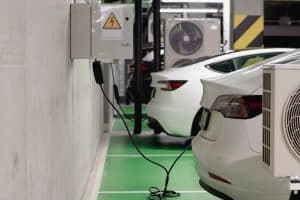Carpool Lanes Incentivize Shared Rides
Carpooling, or sharing a ride with others going in the same direction, has become increasingly popular in recent years. With the rise of environmental concerns and traffic congestion, many individuals are looking for ways to reduce their carbon footprint and save time on their daily commute. One way in which cities and states are incentivizing carpooling is through the implementation of carpool lanes. These designated lanes are reserved for vehicles with multiple occupants, and have been found to not only incentivize shared rides, but also have a range of other benefits. In this article, we will explore how carpool lanes incentivize shared rides and their impact on the environment, traffic congestion, and individual commuters.
The Purpose of Carpool Lanes
The main purpose of carpool lanes is to encourage people to share rides and reduce the number of single occupancy vehicles on the road. By designating a lane specifically for vehicles with multiple occupants, cities and states hope to decrease traffic congestion, save time for commuters, and reduce emissions. Carpool lanes also serve as a reward for those who choose to carpool, as they experience a faster and smoother commute compared to those using the regular lanes.
Reducing Environmental Impact
One of the major benefits of carpool lanes is the reduction of carbon emissions. When multiple individuals share a ride, there are fewer cars on the road emitting harmful pollutants into the air. This leads to improved air quality and a healthier environment. According to a study by the California Air Resources Board, the implementation of carpool lanes in California has resulted in a decrease of 100,000 tons of pollutants annually.
Decreasing Traffic Congestion
Carpool lanes also play a significant role in reducing traffic congestion. With fewer cars on the road, there is less congestion, allowing for a smoother and faster commute for those using the carpool lane. This not only benefits the carpoolers, but also those using the regular lanes. As the overall traffic flow improves, the likelihood of accidents and delays decreases, creating a safer and more efficient commute for all drivers.
The Impact on Commuters
In addition to the benefits for the environment and traffic, carpool lanes also have a positive impact on individual commuters. The use of carpool lanes can save drivers time, as they are often given priority at on-ramps and toll booths. This can also result in cost savings, as fewer tolls may need to be paid. Furthermore, carpool lanes can make commuting more enjoyable, as drivers have the opportunity to socialize and build relationships with their carpool partners.
Potential Disadvantages
While there are numerous benefits to carpool lanes, there are also a few potential disadvantages. Some argue that the implementation of carpool lanes can create a sense of exclusivity and division on the roads, as individuals without multiple occupants are not allowed to use the lane. This can lead to frustration and animosity among drivers. Additionally, carpool lanes are not always utilized to their full capacity, resulting in the lane being underutilized at certain times of the day.
In Conclusion
Carpool lanes serve as a valuable incentive for individuals to share rides and contribute to a more sustainable and efficient transportation system. By reducing traffic congestion, decreasing emissions, and providing time and cost savings for commuters, carpool lanes have a positive impact on both the environment and individual drivers. However, it is important for cities and states to continue to evaluate and adjust their carpool lane policies to ensure they are effectively incentivizing shared rides and not causing exclusion or underutilization of the lanes. With the continued implementation of carpool lanes, we can work towards a more sustainable and streamlined commute for all.











